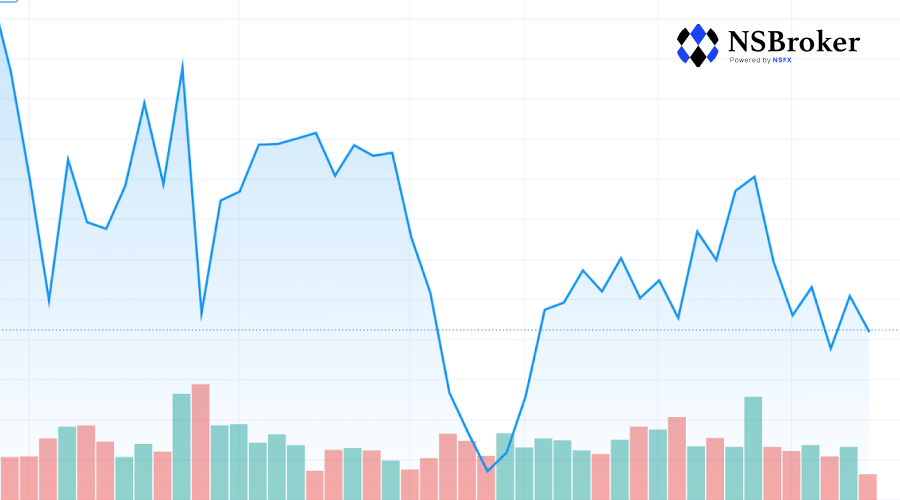How to Trade USD/JPY?

Among forex traders, it is believed that trading the USDJPY currency pair is difficult because its movements are unpredictable. This is not entirely true. The main reason for the difficulties is a lack of knowledge. Many traders simply do not know its features. We will talk about how to trade USDJPY, about the Japanese economy, about what affects the quotes of a currency pair, and about trading strategies directly, in today's review.
Some facts about the JPY
The Ministry of Finance is the most important political and monetary institution in Japan. Its influence on the JPY exchange rate is more significant than the influence of the Treasury Departments of the United States, Great Britain, or Germany. Officials from the Ministry of Finance often make statements about the state of the economy, and these statements have a significant impact on the yen rate. These statements include verbal intervention, which is designed to avoid unwanted growth/depreciation of the yen.
Since 1998, the Bank of Japan (BoJ) has gained operational independence from the government’s Ministry of Finance. Full control over monetary policy has passed to the Bank of Japan, but the Ministry of Finance continues to control the foreign exchange market policy towards the Japanese yen. The Economic and Fiscal Policy Agency is responsible for formulating economic planning programs and coordinating economic policies, including employment, international trade, and the foreign exchange market.
The Ministry of Economy, Trade, and Industry (METI) is a government agency dedicated to supporting the interests of Japanese industry and protecting the competitiveness of Japanese corporations internationally. This organization is directly interested in the strength of the Japanese yen against the dollar, pound, and euro since the strength of the national currency leads to an increase in the competitiveness of national goods in the international market.

Japanese economic data affecting the USD/JPY exchange rates
Gross domestic product (GDP) It is the total value of all goods and services produced during the year on the territory of the country without dividing the resources used for their production into imported and domestic ones.
Tankan Review (Quarterly Business Sentiment and Expectations Review)
It is a report published by the Bank of Japan quarterly since 1957. The data is collected from a survey of 9,000 enterprises, divided into 4 main groups: Large, medium, small, and industry leaders. The report consists of questions on quantitative data:
- business environment
- supply and demand conditions for production and investment
- sales
- corporate profits
- fixed investment and production capacity
- employment conditions
- tax conditions
Based on these quantitative indicators, the Bank of Japan calculates the so-called diffuse indices:
- favorable or unfavorable conditions for doing business
- sufficient or insufficient conditions of demand, stocks, production capacity, and employment
- easing or tightening of financial conditions for companies
- favorable or harsh lending conditions
The Tankan report provides an overview of the business climate in Japan and therefore often has a significant impact on the JPY/USD rate.
International trade
The system of international commodity-money relations, formed from the foreign trade of all countries of the world, is an accounting of trade transactions of residents with non-residents for a certain period. An important factor in forecasting GDP.
Unemployment rate
The percentage of unemployed among the working-age population. It is one of the key macroeconomic indicators used as an indicator of possible inflationary pressures through wage increases.
Industrial production
The index that shows the total output of national factories, mines, the total volume of utilities, etc. An increase in the indicator contributes to the growth of JPY against USD, EUR, and GPB.
The dependence of the yen on the import of resources. Japan has very limited natural resources; hence, its economy depends strongly on the export/import correlation. When the price for commodities grows, the quotations of the yen shrink and the USD/JPY pair grows.
How to trade USD/JPY?
It is possible to trade on USD/JPY profitably, but it is worth remembering its features. During the day, you should pay attention to the opening of the American session. You can also build strategies based on it. If you hold positions for a long time, following the trend is a relevant trading method, since the trends are long here. There are currently no interventions on the yen. Therefore, if you find information about them on the Internet, you should not pay attention to it. If you use Fibonacci levels in your trading, then for the USDJPY pair the actual levels are 23.6 and 38.2. Yen pairs move in a similar way, if you trade several of them at the same time, divide the risk into equal parts.
The pair has a direct correlation with the Nikkei 225 index. If you are trading H1-H4, then open the index chart so that at the moment it does not correspond to the USDJPY chart, you can use it in your trading. There is also a correlation between the SnP500 index and oil prices. But this is relevant for longer-term strategies and can be used, provided that you hold positions for more than a month. The most volatile day of the week on the USDJPY currency pair is Wednesday. The price move is approximately 90 points per day.
Technical analysis works weaker than on other currency pairs. It is better to look at candlestick patterns on daily charts, but there is no point in trading on time frames below M15 intraday. And most importantly, do not be afraid to enter the market several times, as the yen reacts to technical analysis somewhat slowed down.
Bottom line
The USD / JPY currency pair is classified as highly volatile and can show short-term sharp drops in price in the range of 20-40 pips. Other JPY crosses such as EUR / JPY and GBP / JPY can influence the price movements of the USD / JPY currency pair. USD / JPY is extremely popular and the spread is usually relatively low and competitive
We estimate supply and demand for the dollar and the yen in terms of the rate of this currency pair through the volume of liquidity coming to or from the markets of the respective countries - through government bonds. Positive "carry trade" is viewed by the market as a negative factor for the Japanese economy, because as a result, money outflows from the country. In turn, this is a factor in the strengthening of the USD / JPY rate. Accordingly, if Japan repatriated its capital, it would become a negative factor for the USD / JPY rate and lead to a strengthening of the economy. Countries with trade surpluses that have built up foreign reserves are buying the dollar against the yen (USD / JPY) because they have traditionally considered this strategy for higher interest rates. Traditionally, there is a high correlation between different financial markets.










